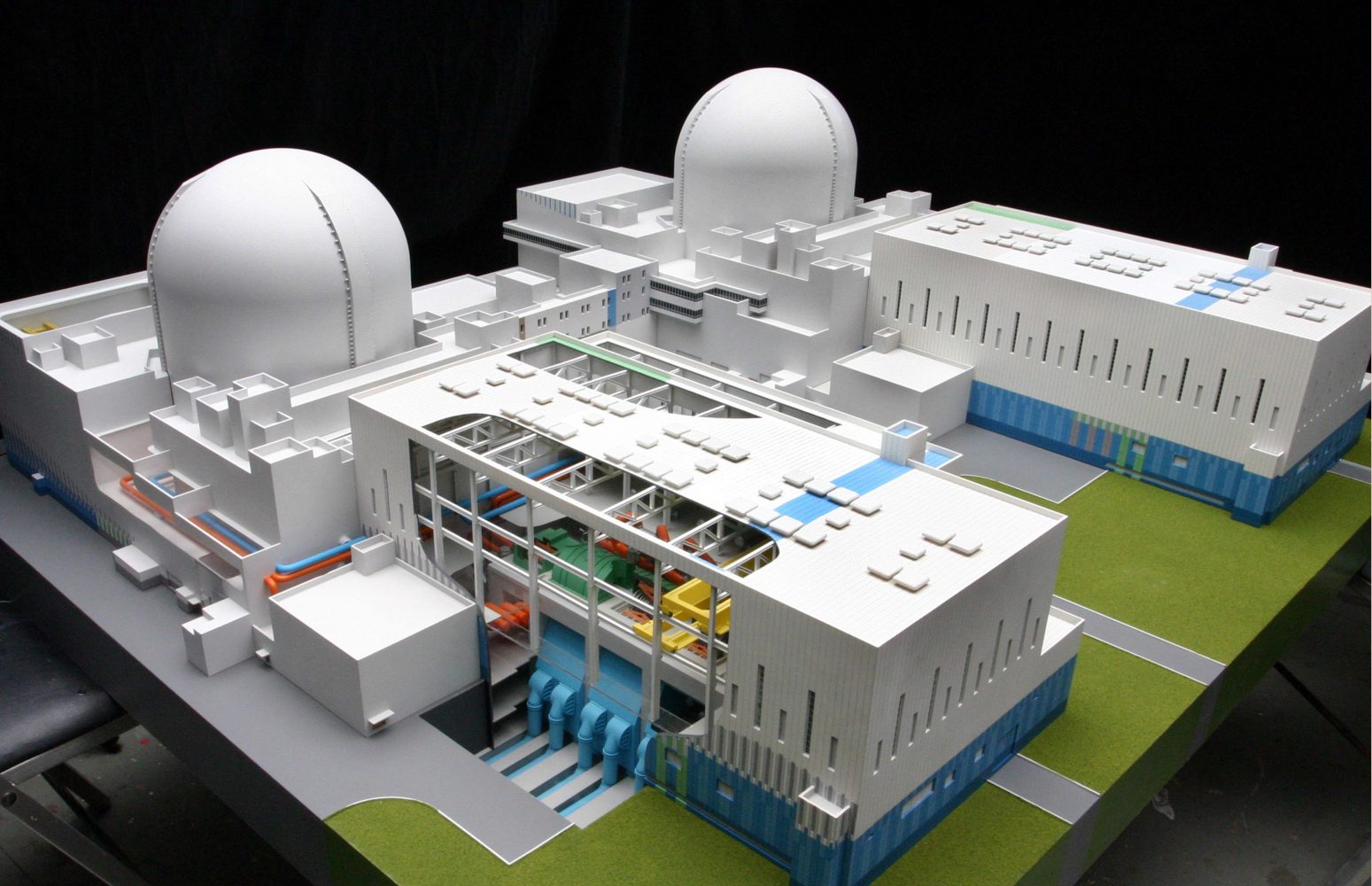
Xudabao Project Proceeds
back to contentsRosatom begins work on building two units at the Xudabao nuclear power plant. According to the general contract, the first concrete will be poured at Unit 3 in October 2021 and Unit 4 in August 2022.
AEM will construct Xudabao Units 3 and 4 in the same-name village located on the coast of the Liaoning Province, China. The two units will be built to the Russian VVER-1200 design.
Preparations for the construction began in June 2018 when Russia and China signed a protocol to construct several power units jointly and made a framework agreement to build the Xudabao NPP. As early as March 2019, the parties signed an engineering design contract, which was followed by a general contract for Units 3 and 4 in June of the same year.
According to the contract, Rosatom will design nuclear islands of the both units and supply key equipment and machinery for them, and also provide design supervision, installation and commissioning services. CNNP Liaoning Nuclear Power Co., Ltd. (CNLNPC) will do installation of the nuclear islands at the both units to the design developed by AtomProekt.
The AES-2006 design has already been tried and tested in Russia – it is used at Leningrad Units 5 and 6 (Leningrad II Units 1 and 2 according to the Power Reactor Information System). However, Xudabao is not an exact replica of Leningrad II and has local specifics arising from the soil type, climate, water supply systems and legal requirements for nuclear, fire and environmental safety.
Operations preceding the first concrete pouring are running ahead of schedule. The foundation pit for the nuclear island buildings was inspected and accepted in early November 2020. Concrete bedding has been laid under the main buildings of the nuclear island for Unit 3. At present, workers are installing lightning protection, waterproofing and reinforcement for the basemat. Installation of reinforcement bars under the reactor building are more than 50% complete.
Earthworks are underway on the site of Unit 4: workers have started digging a pit.
Simultaneously, machines and equipment keep arriving at the site. In early February 2021, the first lot of sealed penetrations was delivered to the site by rail. Sealed penetrations are used to run pipes through walls and slabs of the reactor island without letting water and air in or out.
Also in February, AEM Technologies (part of AtomEnergoMash) began to manufacture a VVER-1200 reactor and steam generators. Workpieces for the RPV shells have passed incoming quality inspection; their machining has begun. It is not a fast process: each 92-ton nozzle shell of the reactor pressure vessel is machined for 15 days. Simultaneously, core shells are prepared for anti-corrosion deposition welding. Steam generator shells are smaller (37 tons) and machined for only six days. After the machining of all 16 shells is finished, the assembly of steam generators will begin.
Although Xudabao has not yet entered a construction phase, TVEL signed a contract with subsidiaries of China National Nuclear Corporation (CNNC) back in November 2019 to supply nuclear fuel for Xudabao Units 3 and 4.
Xudabao is not Rosatom’s first project in China. It also takes part in the construction of Units 7 and 8 of the Tianwan nuclear power plant. Four other units built by Rosatom earlier are already in operation. The first two units were commissioned in 2006 and 2007, followed by the third and fourth units in 2017 and 2018, respectively.
Besides, the Research Institute of Atomic Reactors (RIAR, part of Rosatom) made a contract with China’s Fangda Carbon New Material Co. to carry out material research. RIAR will conduct in-pile tests and post-irradiation analysis of graphite samples. Test conditions will imitate those that graphite will meet inside a high-temperature gas-cooled (HTGR) pebble-bed reactor HTR-PM600. The test results will be used in a feasibility study for the use of graphite as a structural material of the reactor core.
TVEL will also produce fuel for the first load of the Chinese fast neutron reactor CFR-600 and reloads during the next seven years. Fuel deliveries are scheduled to begin in 2023.
AtomStroyExport (ASE) and AtomProekt belong to Rosatom’s engineering division, which is a global leader constructing the most nuclear power plants abroad and having the world’s largest portfolio of nuclear construction contracts. The division is active in Europe, Middle East, North Africa, and Asia Pacific.
ASE’s core activities are project management in the construction of thermal and nuclear power plants, construction and design supervision, and related consultancy services. AtomProekt focuses on the design and engineering of thermal and nuclear power plants, technology development, production of machinery and equipment, scientific research, and audit of technical documents related to the use of nuclear energy, nuclear and radiation safety.
Rosatom’s fuel company TVEL consolidates nuclear fuel producers, uranium conversion and enrichment companies, gas centrifuge manufacturers, and research and development organizations. TVEL supplies nuclear fuel for 75 power reactors in 15 countries, research reactors in nine countries, and Russian nuclear-powered icebreakers.
AtomEnergoMash (AEM) is Rosatom power engineering division and one of Russia’s largest power machinery producers providing comprehensive solutions in design, manufacture and supply of machinery and equipment for nuclear, thermal, petroleum, shipbuilding and steel-making industries. Its production facilities are located in Russia, Czech Republic, Hungary and others.




